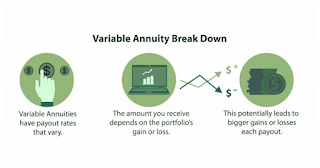Contingent Annuitant

Contingent Annuitant Annuities are financial products that pay a fixed income stream to an individual and are commonly used by retirees. A contingent annuitant is someone designated by an annuitant to receive the annuitant’s payments when they pass away. A contingent annuitant is included in an annuity contract when you want to provide ongoing financial security to another individual. Annuities with a contingent annuitant do not stop payments until both the annuitant and the contingent annuitant have passed. Essentially, having a contingent annuitant means that the annuity will continue to pay until two people pass away as opposed to just one. If the policy does not allow for a contingent annuitant, the annuity stops making payments when the annuitant dies. For annuities with a contingent annuitant, the payments may be smaller as they are meant to last longer by covering both the annuitant and the contingent annuitant until death. The difference between a contingent annuitant an...


















